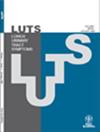Among noninvasive modalities for assessing bladder outlet obstruction (BOO), the penile cuff test (PCT) is the most used in clinical practice. The purpose of this review was to evaluate the performance of PCT in diagnosing and managing BOO.
PubMed, Scopus, CINAHL, Embase, Cochrane Library, and Web of Science were searched for studies investigating use of PCT for BOO. Studies evaluating diagnostic parameters, inter-observer agreements, or treatment outcomes using PCT were included. The Preferred Reporting Items for Systematic Reviews and Meta-Analyses protocol was followed (PROSPERO ID: CRD42022300047). A proportional meta-analysis was done for diagnostic accuracy proportions. The Egger's and the Begg-Mazumdar rank-correlation tests were used to assess publication bias. Risk of bias was assessed using the Gradings of Recommendations, Assessment, Development, and Evaluations (GRADE) criteria.
Of the 272 articles retrieved, 17 were included in qualitative synthesis and meta-analysis was performed on five studies (comprising 448 patients). Two studies evaluating inter-observer agreement demonstrated 95% agreement and five studies evaluating procedures reported a 66%-80% surgical success rate on obstructed patients using PCT. From the proportional meta-analysis, the sensitivity, specificity, positive predictive value (PPV), and negative predictive value (NPV) were 0.85 (95% CI 0.71-0.95) 0.78 (95% CI 0.67-0.87), 0.74 (95% CI 0.52-0.91), and 0.87 (95% CI 0.73-0.96), respectively. Publication bias was noted for PPV but not for sensitivity, specificity, or NPV. Based on the GRADE criteria, there were two low, six moderate, and nine high-quality studies.
PCT performs sufficiently in diagnosing and managing BOO. However, due to variability in obstruction criteria assessment, more studies comparing diagnostic criteria are warranted.


